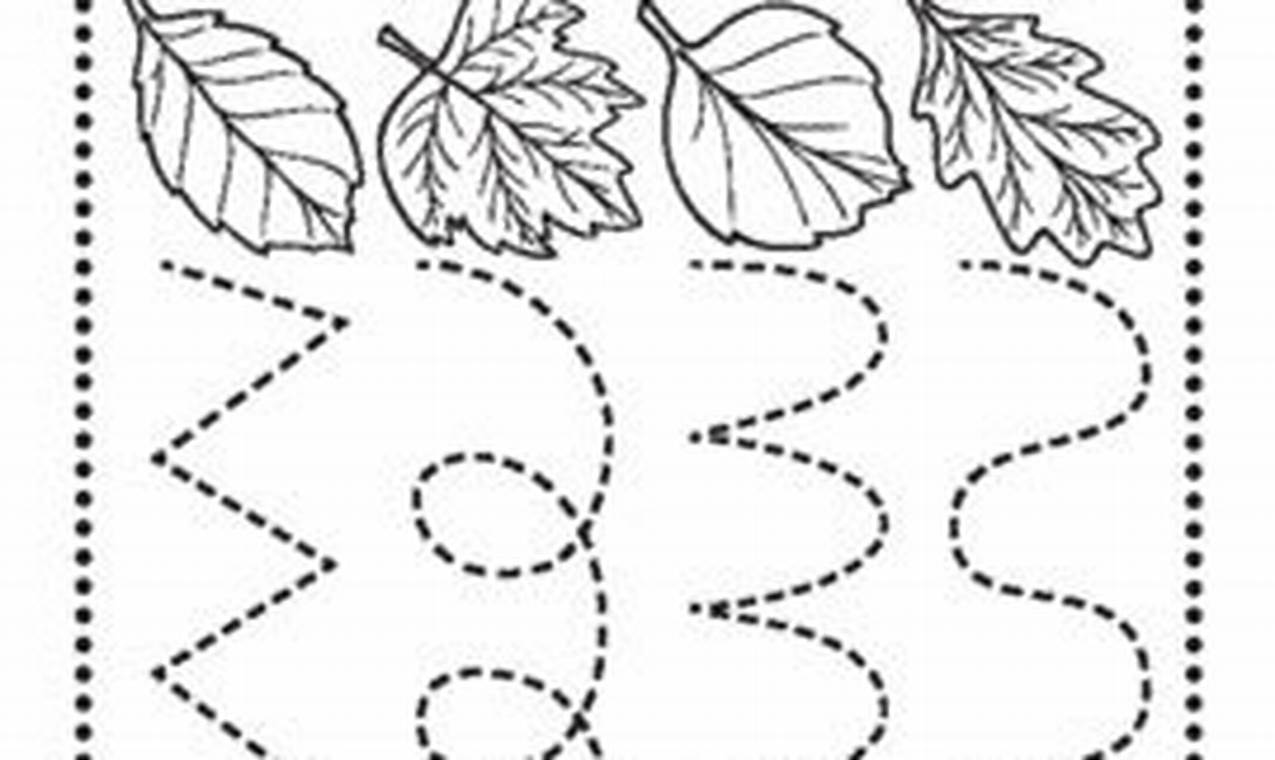The beauty of fall provides a unique opportunity to engage children in learning through nature-inspired activities. Utilizing leaf tracing worksheets for fall allows young learners to connect with the changing season while simultaneously developing crucial pre-writing skills. This activity fosters an appreciation for nature’s artistry and lays a strong foundation for handwriting readiness.
The primary learning benefits of using leaf tracing worksheets for fall extend beyond simple line drawing. This engaging exercise enhances fine motor skills, crucial for tasks such as buttoning clothes and using utensils. It also improves hand-eye coordination as children visually track the lines and translate that information into controlled hand movements. Furthermore, completing these worksheets enhances focus and concentration as children strive to accurately follow the outlines of the leaves.
Leaf tracing worksheets for fall typically feature a variety of leaf shapes and sizes, each outlined with clear, bold lines to guide young learners. Some worksheets may include illustrations of different tree species alongside their corresponding leaf outlines, offering a basic introduction to botany. Many also incorporate dotted lines to assist beginners, gradually transitioning to solid lines as the childs skills improve. The ample space around each leaf allows for comfortable hand movement and prevents crowding, making the activity less daunting for young children.
To use leaf tracing worksheets for fall effectively, begin by selecting a pencil with a thick barrel, which is easier for small hands to grip. Guide the child to start at one point of the leaf outline and slowly trace along the lines, encouraging them to stay as close to the edge as possible. If frustration arises, break the task into smaller segments, focusing on one section of the leaf at a time. Positive reinforcement and encouragement are essential to maintain engagement and build confidence. After tracing, the child can further personalize their work by coloring the leaves with crayons or colored pencils, adding another layer of creative expression.
To supplement the learning experience offered by leaf tracing worksheets for fall, consider incorporating real leaves gathered from outdoors. Children can compare the traced outlines to the actual leaves, noting similarities and differences in shape and texture. Additionally, explore related worksheets available on Kidtraces.com, focusing on shape recognition, pattern completion, and other fine motor skill activities. Reading books about trees and autumn further enriches the learning process and fosters a deeper understanding of the natural world.
In conclusion, leaf tracing worksheets for fall provide a fun, educational, and seasonally appropriate activity that develops essential skills in young learners. By improving fine motor control, hand-eye coordination, and concentration, these worksheets contribute significantly to early literacy and handwriting readiness. Downloading and utilizing these free resources from Kidtraces.com offers a valuable opportunity to support continuous learning and skill development in a playful and engaging manner.
